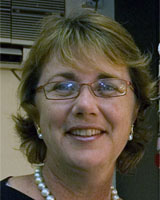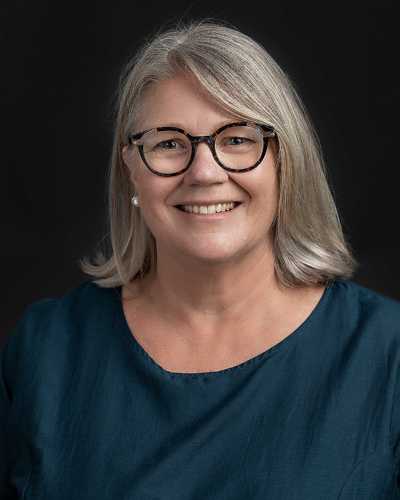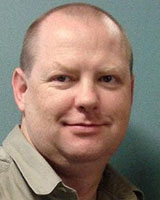Telehealth services in Australia and in other parts of the world have a history of variable uptake despite major investments by government. The previous Australian Government, as part of its National Digital Economy Strategy, committed A$460 million to the national telehealth initiative1. One of the primary aims of this investment was to increase access to health services for people living in regional, rural and remote areas. Telehealth services are expected to reduce the amount of travel required for people living in rural areas and their healthcare providers. As part of planning to reconfigure health services for the people living in an island community between the Australian mainland and the island state of Tasmania2 the authors sought to understand some of the societal perspectives of accessing healthcare and to quantify the carbon cost of travel associated with accessing health care from rural Australia.
The burning of fossil fuels is the leading cause of global warming; if current activity continues the total global emissions from the combustion of fossil fuels are projected to double between 2005 and 20303. While working to improve health, healthcare systems have been contributing to global warming by consuming energy and generating waste4-6. It has been estimated that the healthcare sector in the USA contributes 8% of the country's total emissions. In the UK this is estimated to be 18%7. In Australia emissions associated with health care have not yet been calculated but are expected to be similar to those of the USA and UK. Transport is responsible for 16% of Australia's total emissions8. In the UK, the National Health Service has estimated that travel represents 16% of its health emissions, with patient travel estimated at 7%9. Given Australia's more widely distributed rural and remote population, travel associated with health care would be expected to make a substantially greater contribution to carbon emissions.
Two of the greatest challenges to Australian society are equitable access to health care and global warming. These are related through the impact of patient travel from remote areas to access health care. On 1 July 2012 Australia commenced carbon pricing. In addition to the time and cost of travel, in the developing carbon economy, emissions from transportation and the need to reduce carbon footprint will become an increasingly important factor in decisions about the economics of healthcare delivery. To inform the future of health care planning, in particular telehealth service development for regional, rural and remote Australia, the authors set out to quantify healthcare travel for a remote community, and to quantify the carbon emissions this generates.
King Island has a population of 1553 residents10 and is located midway between the Australian mainland state of Victoria and the island state of Tasmania. King Island is predominantly a farming and fishing community, with some manufacturing of dairy products conducted locally. The Tasmanian Department of Health and Human Services provides a six-bed community hospital with limited inpatient services, and a small team of community nurses provide outreach child health and community nursing services. A general practice, staffed by two doctors and a practice nurse, provides primary care services. The onsite services are supplemented by a range of visiting allied health and specialist medical services funded by Australian Government and state government schemes. Residents are required to travel off the island for surgery, for most specialist services and to access specialised diagnostic procedures. Aircraft are the only means of passenger transport on and off the island. When patients need to travel to access services, they can apply to have some travel and accommodation costs reimbursed through the Patient Travel Assistance Scheme (PTAS). Thus King Island, with a clearly defined population and limited transport options, is an ideal community in which to understand some of the societal perspectives for economic analysis for telehealth service development and to develop a methodology for carbon costing for healthcare-related travel for a remote Australian community.
In November 2012 a team of 15 researchers travelled to King Island to conduct a population survey to assess the financial, social and environmental impacts of travel for residents accessing healthcare off the island. Residents of King Island were notified of the impending survey via a letterbox drop and through the local newspaper. They were able to use reply post to decline to be visited.
The questionnaire included questions about general demographics of households, and any health-related travel events of household members during the 12-month sampling period, 1 July 2011 to 30 June 2012. The survey questionnaires were set up using an electronic survey tool on mobile tablet devices. To conduct the survey, researchers went door-to-door to all households on King Island in teams of two; one member of the team conducted the interview and the second member entered the questionnaire answers into the tablet device. Using a mapping tool, each team was allocated an area to survey. If people were not at home, a flyer with research team contact details was left so another visit could be arranged if the householders were interested. Responses were uploaded into a central data repository each day. Residents were also invited to the local hall to tell the story of their experience. These interviews were recorded for later thematic analysis. PTAS data were obtained from the Tasmanian Department of Health and Human Services for the same survey period, to compare key variables.
The travel data described the total journey, known as the travel event, and included destinations for each leg of the journey and the mode of transport taken for each leg. For distances of more than 50 km travelled by road from the destination airport to health services, the road travel was included in calculations. Distances from the airport than 50 km were not included, being considered usual for metropolitan or outer urban residents. For example, for attendance at Sandringham Hospital, Victoria, flights for King Island to Melbourne return were included, whereas attendance at Geelong included return flights to Melbourne plus the return road trip to Geelong. Similarly, attendance at the Mersey Hospital, Tasmania, included flights to and from Wynyard, while attendance at Launceston Hospital included flights to and from Wynyard plus the return road trip to and from Launceston if this was the route taken. This information was used to calculate how much travel residents of King Island conduct in excess of what is usual for metropolitan or outer urban residents, and also the carbon emissions associated with the fuel burned in tonnes of carbon dioxide equivalent (tCO2e).
Emission calculators were obtained from the Carbon Neutral website. Air travel calculations used the air travel carbon calculator11 This calculator uses three categories to factor in differences in cruising altitude and aircraft type (Table 1). In 2008 this tool was independently verified by the Carbon Reduction Institute Pty Ltd. The flight distances travelled in each leg of the journey were calculated using an online mileage calculator12. Each leg was calculated separately to ensure the fuel burn associated with take-off and landing was included.
Two trips involved stops at rural airports unavailable in the mileage calculator library12, thus distance information was unavailable. One trip was to Ballarat in regional Victoria. In this instance, the emissions calculated for a trip of lesser distance from King Island to Moorabbin airport, Melbourne, were used. The second trip involved a stopover at Shepparton, en route to Brisbane. In this instance, the routes King Island to Moorabbin airport, and Moorabbin to Brisbane, were used as an overall equivalent distance, with the fuel burn associated with two take-offs and landings included.
Road transport emissions were calculated using Carbon Neutral's vehicle and fuel use calculator13. As fuel type and consumption were not available for all road vehicles used by participants, emissions were estimated by kilometres travelled. Road distances travelled were found using an online distance calculator14. The vehicle and fuel use calculator13 estimated fuel use assuming a specific litre/100 km factor. Calculations for vehicle travel emissions assumed a medium car powered by ethanol (10%) and, for a taxi, a large car powered by LPG (Table 2).
In this part of the study, emissions data was calculated for the individual accessing health care. Not calculated were emissions associated with practitioners travelling to the island to deliver services, family members or carers travelling with the person accessing health care off island, or for the crew on the 23 air ambulance transfers.
Table 1: Carrier, aircraft and travel information used for air travel carbon calculator11

Ethics approval
Approval for the study was obtained from the Human Research Ethics Committee (Tasmania) network; ethics approval number H0012850.
In 2011 there were 1553 residents living in 677 households on King Island. Fourteen households responded to the initial flyer drop to decline participation and were not visited. Of the 663 dwellings visited, 297 households participated in the survey. The 297 household participants equates to 43.8% of dwellings, with surveys covering the travel of 625 residents, representing 39.9% of the population. The age and gender of respondents were compared with the 2011 Australian Bureau of Statistics census data10. Gender distribution was not different from the census (χ2 = 0.582; degrees of freedom (df) = 1; p>0.44). Age distribution for women was not different from the census (χ2 = 9.78; df = 10; p>0.46). Age distribution for men was different from the census with overrepresentation of 10-19-year-olds and 60-69-year-olds, and underrepresentation of 30-39-year-olds (χ2 = 27.7; df = 9; p<0.001).
Participants reported 511 healthcare travel events for the 12-month period, spent 2298 nights away from the island for health care and travelled a total of 346 573 km, generating total emissions associated with their travel to health services of between 130.87 and 134.64 tonnes of carbon dioxide, depending on the road vehicle and fuel used, or 0.22 tCO2e per capita per year.
A comparison of emissions resulting from different routes and modes of transport to Hobart from King Island was made to allocate emissions to the five events with missing route information. This demonstrates there is a high emission rate associated with air travel in comparison to road travel in a medium ethanol-powered or LPG-powered car. However, using a medium car or four-wheel-drive vehicle powered by petrol or diesel, road travel emissions are comparable with air travel per kilometre travelled for a single person flying on a scheduled flight. An emergency air ambulance flight is a very different story. The total emissions associated with the flight are attributed to the healthcare travel event. Unfortunately, the authors were unable to calculate the emissions associated with the 23 air ambulance flights due to a lack of comparable flight category data. These data have been included based on the scheduled flight data to the relevant destination.
The major factors participants identified that influenced their decisions to seek health care on the mainland, rather than in Tasmania, where support for travel is available except where services are not available in Tasmania, were to use their social network for transport, accommodation and emotional support; continuity of care; cheaper flights; and for the ability to attend to all of their healthcare needs, often in a one-day trip. That is, it was often less of a financial or social cost to them than attending services in Tasmania. Participants reported 13 different destinations for healthcare travel. The Tasmanian Department of Health and Human Services processed 824 claims for the PTAS from King Island residents over the sample period. Of these claims, 228 (27.7%) were for services that could not be provided in Tasmania. Participants claimed PTAS for 313 travel events, 38.0% of the total PTAS claims from King Island; 86 (27.5%) were for travel events outside of Tasmania; eight participants were unsure if a claim was lodged or not. King Islanders bore the total travel costs for more than 70% of their healthcare travel. Services were sought outside of Tasmania in 45.4% (232) of all cases. The most common destination was Melbourne, Victoria, 40.5% (207) of all reported events. Burnie, Tasmania, was the next most common destination, accounting for 24.9% (127) of events (Table 3).
Table 2: Tonnes of carbon dioxide equivalent comparison by vehicle type
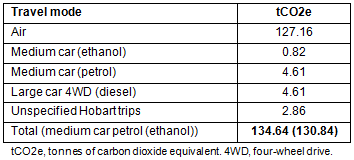
Table 3: Number of travel events and nights away for healthcare travel for 12-month study period
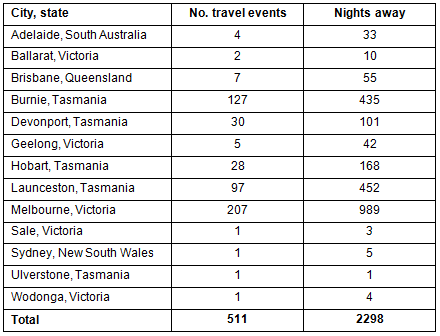
Discussion
Many countries provide assistance for their citizens to travel for health care. This assistance can include transport, parking, accommodation and the costs incurred by an escort if this is deemed appropriate15,16. Each state in Australia has its own schemes to assist people to access health care. In some instances where services are not available in a particular state, services can be accessed in another state. This is often the case in the smaller states like Tasmania. Highly specialised services are provided in one of the major capital cities such as Melbourne or Sydney. For people living in rural or remote areas there is an expectation that specialist services will not be available locally.
With the advent of telehealth and the recent investment in information and telecommunications infrastructure to rural and remote areas, this situation is changing. Some Australian states, such as Queensland and Western Australia, have well-established telehealth systems. Well-organised networks of specialists can provide timely access to services in a wide range of specialties such as psychiatry, wound care nursing, oncology and paediatrics17-19. Ensuring patients in rural and remote areas get access to the best care requires general practitioners to understand what services are available and to refer patients to them appropriately. To aid in this process, specialist colleges such as the Australian College of Rural and Remote Medicine and the Royal Australian College of General Practitioners have set up projects and provided information on their websites identifying specialists who provide teleconsultations20,21. However, if patients are not referred appropriately, or if the practitioner to whom they are referred does not provide teleconsultations, then the onus for travel is on the patient.
Patients are making choices to travel to where their supports are, such as for accommodation with friends and relatives, or access to transport when they arrive. Many rural and remote people have commitments that make it difficult to be away from home for a long time. Many King Islanders, being dairy farmers, found it very difficult to be away and as a result delayed seeking treatment, or did not return for follow-up care if travel was involved, or chose to go to a destination that allowed them to complete all of their requirements for care in a single day trip. Continuity of care was also a feature in the decision-making related to travel. Patients who may have moved from mainland Australia to King Island were choosing to continue to see the same specialist from whom they had previously received treatment. Some of these people were setting up their own telehealth services, consulting with their specialist from home via email or skype. Many people had no option but to travel large distances and be away for extended periods of time to access health care.
The 134.64 tonnes of carbon dioxide equivalents associated with accessing health care for the 12 months of the study period for the participants of King Island represents, in offsets, growing 20 trees for 30 years. Australian emissions for the year to September 2012 have been estimated at 24.1 tCO2e per capita8. Given the high use of large petrol- and diesel-powered cars by remote populations, the emissions data presented here becomes relevant to all remote communities. Based on Australian Bureau of Statistics data in 2010, 324 000 people in Australia live in remote areas and 174 000 in very remote areas22. If all remote Australians accessed health care similarly to the King Island sample, this could equate to 109 560 tCO2e per year. As the Australian Government is still committed to reducing carbon pollution by 5% from 2000 levels by 20298, despite uncertainty about the independent climate change authority and the carbon tax, a reduction in the environmental impact of healthcare travel can contribute to this goal.
Remote communities provide important mining, agriculture, fishing and tourism industries in Australia. People currently have to travel to access many healthcare services including diagnostics and specialist care as well as follow-up services. In addition to the personal cost/impact of poorer access to services, there is a substantial carbon cost to all Australians of people in remote communities being required to travel substantial distances for care. Further research is needed to determine how much of this could be reduced by telehealth. The methodology described here adds a societal and environmental perspective on quantifying the cost of healthcare-related travel and adds another dimension to the quadruple bottom line for healthcare planning.
References
1. Department of Health and Ageing. Telehealth. Canberra, ACT: Department of Health and Ageing, Australian Government, 2013.
2. Commission on Delivery of Health Services in Tasmania. Preliminary report to the Australian Government and Tasmanian Government Health Ministers. Canberra, ACT: Commission on Delivery of Health Services in Tasmania, 2012.
3. Garnaut R. The Garnaut review 2011: Australia in the global response to climate change. Melbourne, VIC: Cambridge University Press, 2011.
4. Guenther R, Hall AG. Healthy buildings: impact on nurses and nursing practice. Online Journal of Nursing Issues 2007; 12(2): 2.
5. Connor A, Lillywhite R, Cooke MW. The carbon footprints of home and in-centre maintenance hemodialysis in the United Kingdom. Hemodialysis International 2011; 15(1): 39-51.
6. Brown L, Buttner PG, Canyon DV, Crawford JM, Judd, J. Estimating the lifecycle greenhouse gas emissions of Australian ambulance services. Journal of Cleaner Production 2012; 37: 135-141.
7. Chung J, Meltzer D. Estimate of the carbon footprint of the US health care sector. JAMA 2009; 302(18): 1970-1972.
8. Department of Climate Change and Energy Efficiency. Australian national greenhouse accounts, quarterly update of Australia's Greenhouse Gas Inventory, September quarter 2012. Canberra, ACT: Department of Climate Change and Energy Efficiency, Australian Government, 2013.
9. National Health Service Sustainable Development Unit. NHS England carbon footprint update. London: NHS, 2012.
10. Australian Bureau of Statistics. Census of Population and Housing: Basic Community Profile, 2011 Third Release. Canberra, ACT: ABS, 2013.
11. Carbon Neutral. Air travel carbon calculator. (Online) 2011. Available: http://www.carbonneutral.com.au/carbon-calculator/air-travel.html (Accessed 10 June 2013).
12. Web Flyer. Mile marker: mileage calculator. (Online) Available: http://www.webflyer.com/travel/mileage_calculator (Accessed 10 February 2013).
13. Carbon Neutral. Vehicle and fuel use calculator. (Online) 2011. Available: http://www.carbonneutral.com.au/carbon-calculator/vehicles-and-fuel-use.html (Accessed 10 June 2013).
14. Australian Distance Calculator (Online). Available: http://distancecalculator.globefeed.com/Australia_Distance_Calculator.asp (Accessed February 2013).
15. Veterans Affairs Canada. Treatment benefits: health-related travel. Ottowa, Canada: Public Works and Government Services Canada, 2013.
16. Ministry of Social Development. Health related assistance. Wellington, New Zealand: Ministry of Social Development, New Zealand Government, 2013.
17. Centre for Online Health. Impact and influence. (Online). 2013. Available: http://www.uq.edu.au/coh/impact-and-influence (Accessed 10 June 2013).
18. WoundsWest. WoundsWest Advisory Service. (Online). 2013. Available: http://www.health.wa.gov.au/woundswest/advisory/index.cfm (Accessed 10 June 2013).
19. Sabesan S, Brennan S. TeleOncology for cancer care in rural Australia. In G. Graschew (Ed.) Telemedicine techniques and applications. 2011, 289-306. (Online). Available: http://www.ehealth.acrrm.org.au (Accessed 15 February 2013).
20. Australian College of Rural and Remote Medicine. eHealth. (Online). 2013. Available: http://www.ehealth.acrrm.org.au/provider-directory?term=&type%5Bconsultant%5D=consultant (Accessed 15 February 2013).
21. Royal Australian College of General Practitioners. Telehealth. (Online). 2012. Available: http://www.racgp.org.au/your-practice/e-health/telehealth (Accessed 15 February 2013).
22. Baxter J, Gray M, Hayes A. Families in regional, rural and remote Australia. Canberra, ACT: Australian Institute of Family Studies, 2011.
